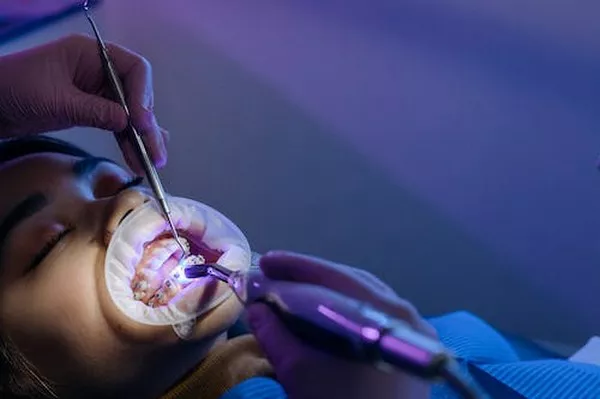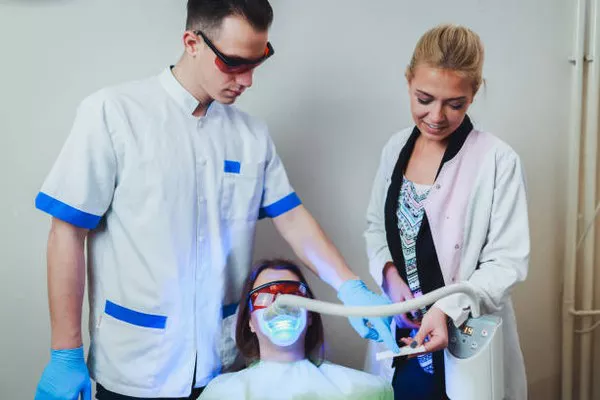Gingivitis, an early stage of gum disease, is a common oral health concern affecting millions of people worldwide. While it may start as a mild condition, untreated gingivitis can progress to more severe forms of gum disease, leading to potential tooth loss and other complications. In this article, we’ll explore what mild gingivitis looks like, its symptoms, preventive measures, treatment options, and when to seek professional dental care.
Visual Representation
Visual representation plays a crucial role in recognizing mild gingivitis. Clear images or diagrams are essential to highlight the common signs, such as swollen or puffy gums, and color changes to bright or dark red. In mild cases, the gums may appear inflamed and slightly swollen, particularly along the gumline. The color of the gums may range from a healthy pink to a deeper red hue, indicating increased blood flow and inflammation.
Symptoms Description
Swollen or Puffy Gums: One of the primary indicators of mild gingivitis is gum inflammation, leading to swelling and puffiness. This swelling is often most noticeable along the margins of the gums, where they meet the teeth.
Gums That Bleed Easily: Healthy gums should not bleed during regular activities such as brushing or flossing. However, in cases of mild gingivitis, the gums may bleed easily, especially when brushing with a toothbrush or flossing between teeth.
Tender Gums: Mild gingivitis can cause discomfort or tenderness in the gum tissue. This tenderness may be particularly noticeable when applying pressure to the gums, such as during brushing or eating.
Bad Breath (Halitosis): Bacterial buildup in the mouth, a common feature of gingivitis, can lead to bad breath. This unpleasant odor is often persistent and may not improve with regular brushing or mouthwash use.
Comparison with Healthy Gums
Contrasting the signs of mild gingivitis with healthy gums is essential for early detection. Healthy gums are typically firm, pale pink in color, and fit tightly around the teeth. Unlike inflamed gums, they do not bleed easily, feel tender, or exhibit signs of swelling or puffiness.
Stages of Gingivitis
Gingivitis progresses through various stages, with mild gingivitis being the earliest phase. Without intervention, it can advance to more severe forms of gum disease, such as moderate or advanced periodontitis. Early detection and treatment are crucial for preventing the progression of gingivitis and preserving oral health.
Preventive Tips
Preventing gingivitis involves maintaining good oral hygiene practices:
Brushing: Brush your teeth at least twice a day with a fluoride toothpaste, using a soft-bristled toothbrush. Pay attention to brushing along the gumline to remove plaque and prevent its buildup.
Flossing: Floss daily to remove food particles and plaque from between teeth and along the gumline where a toothbrush may not reach effectively.
Rinsing: Use an antiseptic mouthwash to help reduce bacteria and prevent plaque formation.
Regular Dental Check-ups: Schedule routine dental visits for professional cleanings and examinations to monitor your oral health and address any concerns promptly.
Treatment Options
Professional treatments for mild gingivitis may include:
Scaling and Root Planing: This deep cleaning procedure removes plaque and tartar buildup from below the gumline and smoothens the tooth roots to prevent bacterial reattachment.
Professional Dental Cleanings: Regular dental cleanings help remove plaque and tartar buildup, reducing the risk of gingivitis progression.
At-Home Care Practices: In addition to professional treatments, maintaining good oral hygiene habits at home is crucial for managing mild gingivitis. Follow your dentist’s recommendations for brushing, flossing, and using mouthwash regularly.
When to See a Dentist: Seeking Professional Care
It’s essential to consult a dentist if you experience symptoms of mild gingivitis, especially if they persist or worsen over time. Additionally, seek professional care if you notice any signs of advanced gum disease, such as gum recession, loose teeth, or changes in the fit of dentures or dental appliances.
Early intervention and proper management are key to addressing mild gingivitis effectively and preventing its progression to more severe forms of gum disease. Your dentist can provide personalized recommendations and treatment options based on your individual needs and oral health status.
Conclusion
Mild gingivitis presents with symptoms such as swollen or puffy gums, gum bleeding, tenderness, and bad breath. Visual representation, comparison with healthy gums, understanding the stages of gingivitis, preventive tips, treatment options, and knowing when to seek professional care are essential aspects of managing this common oral health condition. By maintaining good oral hygiene practices and seeking timely dental care, you can effectively prevent and treat mild gingivitis, preserving your oral health and overall well-being.
FAQs about Gingivitis
1. What does minor gingivitis look like?
Minor gingivitis, also known as mild gingivitis, often manifests as redness and swelling of the gums. You may notice that your gums appear more sensitive, tender, and prone to bleeding, especially when brushing or flossing. Additionally, you might experience mild bad breath (halitosis) due to the accumulation of bacteria in the affected areas.
2. What are the criteria for mild gingivitis?
The criteria for diagnosing mild gingivitis typically include:
- Redness and swelling of the gums
- Gums that bleed easily, especially during brushing or flossing
- Mild tenderness or discomfort in the gum tissue
- Presence of plaque and tartar buildup along the gumline
- Slight bad breath due to bacterial accumulation
- No significant loss of gum tissue or attachment to the teeth
If you experience any of these symptoms, it’s essential to consult with a dentist or periodontist for a thorough evaluation and appropriate treatment.
3. Can mild gingivitis go away?
Yes, mild gingivitis can often be reversed with proper oral hygiene and professional dental care. By adopting good oral hygiene habits, such as brushing twice a day, flossing daily, and using an antiseptic mouthwash, you can help remove plaque and prevent its accumulation, thereby allowing the gums to heal. Regular dental cleanings and check-ups are also crucial for removing tartar buildup and monitoring your oral health.
However, if left untreated, mild gingivitis can progress to more severe forms of gum disease, such as periodontitis, which may cause irreversible damage to the gums and supporting structures of the teeth. Therefore, it’s essential to address gingivitis promptly to prevent complications.
4. What does stage 1 gingivitis look like?
Stage 1 gingivitis, also known as initial or early gingivitis, typically presents with the following signs and symptoms:
- Redness, swelling, and inflammation of the gums
- Gums that bleed easily, especially when brushing, flossing, or eating hard foods
- Mild tenderness or discomfort in the gum tissue
- Presence of plaque and tartar buildup along the gumline
- Slight bad breath (halitosis) due to bacterial accumulation
At this stage, the damage to the gums is reversible with proper oral hygiene and professional dental care. However, if the condition progresses without intervention, it can lead to more severe gum disease and potential tooth loss.
You Might Be Interested In



























